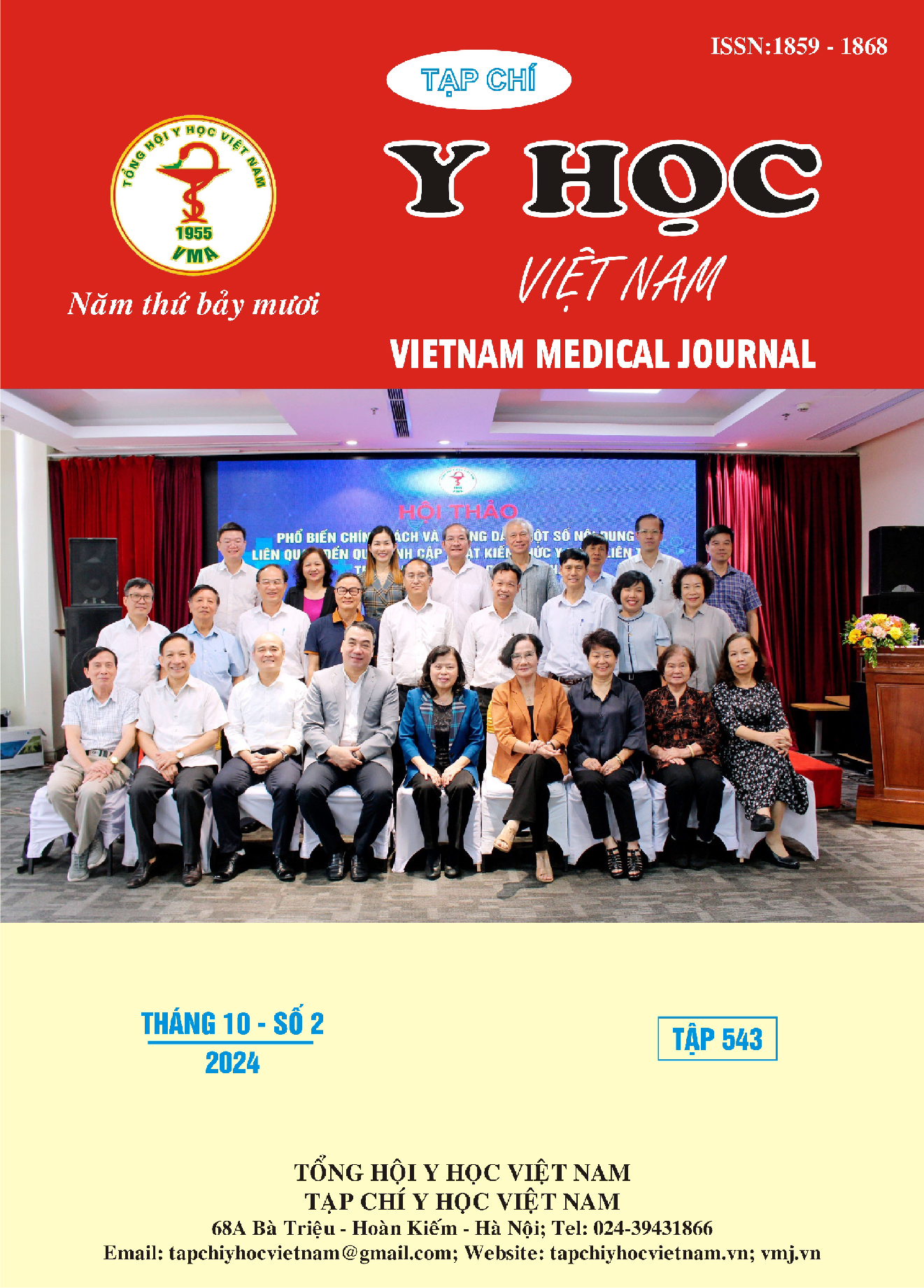CHARACTERISTICS OF QUANTITATIVE PARAMETERS AND HETEROGENEITY ON 18F-FDG PET/CT IN SURGICALLY NON-SMALL CELL LUNG CANCER PATIENTS
Main Article Content
Abstract
Objective: To investigate the characteristics of quantitative parameters and heterogeneity of 18F-FDG PET/CT in patients with non-small cell lung cancer (NSCLC) at a stage where surgery is indicated. Subjects and methods: This retrospective cross-sectional study was conducted on 55 patients with NSCLC who underwent PET/CT imaging before specific treatment at the Department of Nuclear Medicine, 103 Military Hospital, from January 2017 to January 2024. Data were analyzed using SPSS 26.0 software, employing T-tests and Mann-Whitney U tests, kruskal-wallis test and ANOVA test to compare PET/CT parameters. All analyses were two-tailed, with statistical significance set at p<0.05. Results: The majority of patients were male, with a male-to-female ratio of 2.67:1, and the mean age was 59.0 ± 11.6 years. The median values for MTV, MTV 41%, TLG, and TLG 41% were 11.8, 10.2, 95.9, and 73.0, respectively. The mean values for CoV b and CoV 41% were 27.87 ± 5.34 and 23.81 ± 3.05, respectively. Statistically significant differences were found between the quantitative parameters and both the T stage and disease stage. Patients with regional lymph node metastasis had higher MTV, TLG, and CoV parameters than those without regional lymph node metastasis. Conclusion: The volumetric parameters and heterogeneity parameters on 18F-FDG PET/CT images in surgically indicated NSCLC patients are significantly valuable for image analysis and provide useful information for treatment planning.
Article Details
Keywords
Heterogeneity, quantitative parameters, PET/CT, non-small cell lung cancer
References
2. Pak K., Park S., Cheon G. J., et al. (2015) Update on nodal staging in non-small cell lung cancer with integrated positron emission tomography/computed tomography: a meta-analysis. 29: p. 409-419.
3. Mai Huy Thông, (2022) Nghiên cứu đặc điểm hình ảnh và vai trò của 18FDG-PET/CT trong chẩn đoán giai đoạn ung thư phổi không tế bào nhỏ trước phẫu thuật. Luận văn Bác sĩ Nội trú, trường Học viện Quân y.
4. Yu T. (2020) COV is a readily available quantitative indicator of metabolic heterogeneity for predicting survival of patients with early and locally advanced NSCLC manifesting as central lung cancer. European Journal of Radiology. 132: p. 109338.
5. Zito Marino F., Bianco R., Accardo M., et al. (2019) Molecular heterogeneity in lung cancer: from mechanisms of origin to clinical implications. Int J Med Sci. 16(7): p. 981-989.
6. Pahk K., Chung J. H., Yi E., et al. (2018) Metabolic tumor heterogeneity analysis by F-18 FDG PET/CT predicts mediastinal lymph node metastasis in non-small cell lung cancer patients with clinically suspected N2. Eur J Radiol. 106: p. 145-149.
7. Ouyang M.-l., Xia H.-w., Xu M.-m., et al. (2019) Prediction of occult lymph node metastasis using SUV, volumetric parameters and intratumoral heterogeneity of the primary tumor in T1-2N0M0 lung cancer patients staged by PET/CT. 33: p. 671-680.
8. Liao X., Liu M., Li S., et al. (2023) The value on SUV-derived parameters assessed on 18F-FDG PET/CT for predicting mediastinal lymph node metastasis in non-small cell lung cancer. BMC Medical Imaging. 23(1): p. 49.


